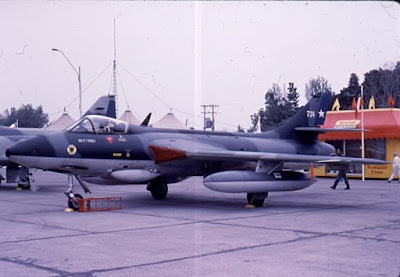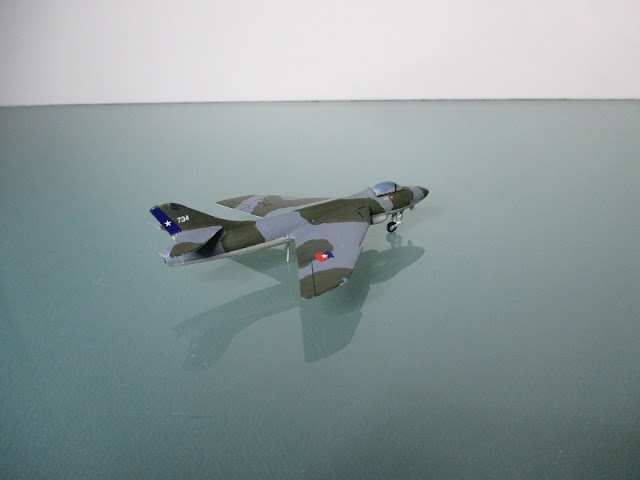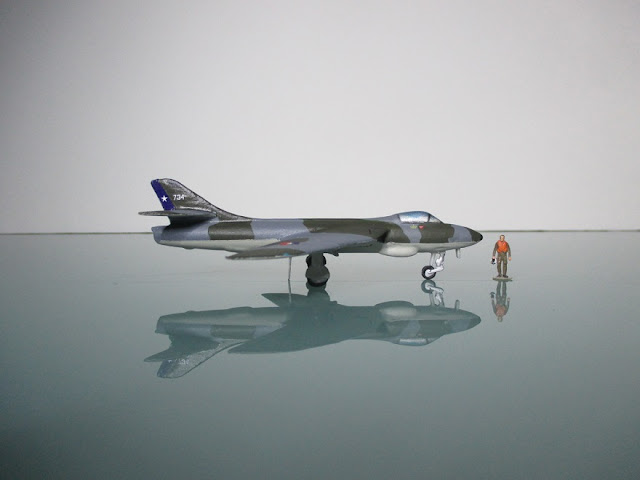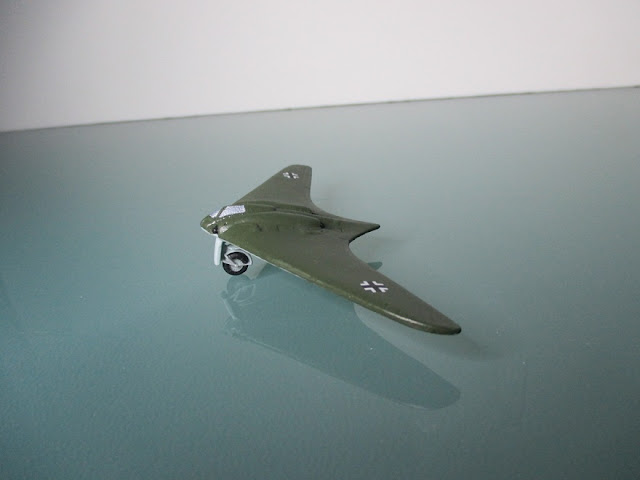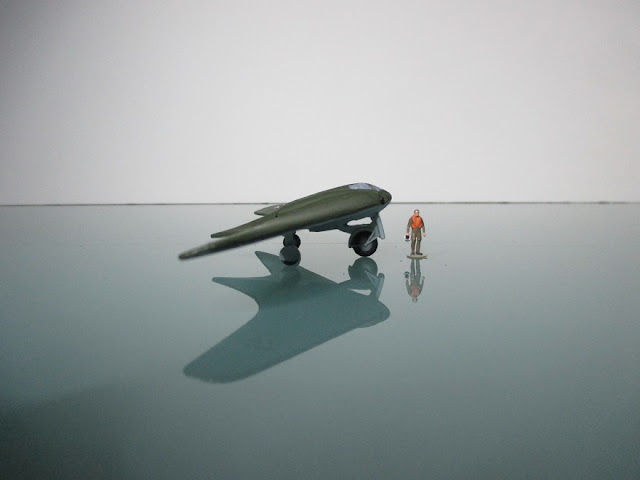Comme vous avez du le comprendre à la lecture du long message de présentation du Horten Ho 229 (
voir ici), j'ai trouvé extraordinaire, à l'époque où cela s'est déroulé, que l'on puisse non seulement inventer, mais créer une aile volante, si moderne qu'il aura fallu attendre 50 ans, avec le B-2, pour la voir en unités de première ligne.
As you must have understood from reading the long presentation message of the Horten Ho 229 (
see here), I found extraordinary, at the time when it happened, that one can not only invent, but create a flying wing, so modern it took 50 years, with the B-2, to see it in front-line units.
Alors, quand j'ai vu sur Shapeways un modèle de Horten Ho 229, non seulement au 1/144, mais également en métal, je n'ai pas hésité une minute, je l'ai bien sûr acheté.
Les vérifications faites dans un premier temps avec le modèle F-Toys, puis avec celui de Brengun opportunément sorti au moment où j'ai commencé à monter le Horten, ont démontré que le modèle Shapeways était parfaitement conforme (même si on peut s'interroger sur l'épaisseur de l'aile, mais on retrouve la même interrogation sur tous les modèles moulés artisanaux).
Le seul problème de l'impression 3D, ou de la fabrication additive, ressort de son nom : on retrouve, en particulier sur les modèles en métal, les lignes de matière ajoutée.
So when I saw on Shapeways a Horten Ho 229 model, not only at 1/144, but also in metal, I did not hesitate a minute, I, of course, bought it.
The checks first made with the F-Toys model, and then with the one from Brengun, which was conveniently released when I started to mount the Horten, showed that the Shapeways model was perfectly in line (although we can question the thickness of the wing, but we find the same question on all the molded craft models).
The only problem of 3D printing, or the additive manufacturing, comes out of its name : we find, especially on metal models, lines of added material.
On les voit bien, non ?
Et là, inutile d'envisager de poncer ces lignes d'ajout de matière : le matériau est excessivement dur, on risque de faire disparaître les quelques lignes de gravure des volets, et on ne peut pas poncer mécaniquement sans risque d'affecter les parties arrondies comme les réacteurs ou le cockpit.
Alors, une seule solution, le mastic.
One can see them well, right ?
And there, no need to consider sanding these lines of addition of material :the material is excessively hard, there is a risk of making disappear the few lines of engraving of the shutters, and one can not sand mechanically without risk of affecting the rounded parts like the reactors or the cockpit.
So, only one solution, putty.
Ce qu'il y a de bien avec le mastic, c'est qu'il en faut toujours plus, et plus on en rajoute et plus on ponce, plus il faut en remettre.
Et quand vous avez l'impression que c'est bon, et que vous commencez à peindre, on s'aperçoit qu'il en faut encore et encore.
Je déteste le mastic.
The good thing about mastic is that you always need more, and the more you add and the more you sand, the more you have to put it back.
And when you have the impression that it's good, and you start painting, you realize that you need it again and again.
I hate putty.
Une fois réglé ce problème, j'ai voulu utiliser les trains d'atterrissage du modèle F-Toys que j'avais, plus conformes que ceux du modèle Brengun, mais deux nouvelles difficultés :
- il a été pratiquement impossible de faire le moindre trou dans le modèle, sans doute en raison des multiples couches liées à la construction additive,
- ce qui a obligé à réduire la hauteur de trains d'atterrissage (sauf de celui de l'avant qui a une conception différente).
Once this problem solved, I wanted to use the landing gear of the F-Toys model that I had, more conform than those of the Brengun model, but two new challenges :
- it was practically impossible to make any holes in the model, probably because of the multiple layers of additive construction,
- thus forcing to reduce the height of the landing gear (except the one of the front which has a different design).
Après, il a suffi de peindre et de poser les décalques du modèle Brengun.
Brengun propose 4 marquages, deux uchroniques, la version fantaisiste juste après guerre, et le prototype V3 juste au moment de sa capture, version que j'ai choisie.
Afterwards, it was enough to paint and to pose the decals of the Brengun model.
Brengun offers four markings, two uchronic, the fantasy version just after the war, and the prototype V3 just at the moment of its capture, the version that I chose.
1/144 Horten Ho 299 V3








